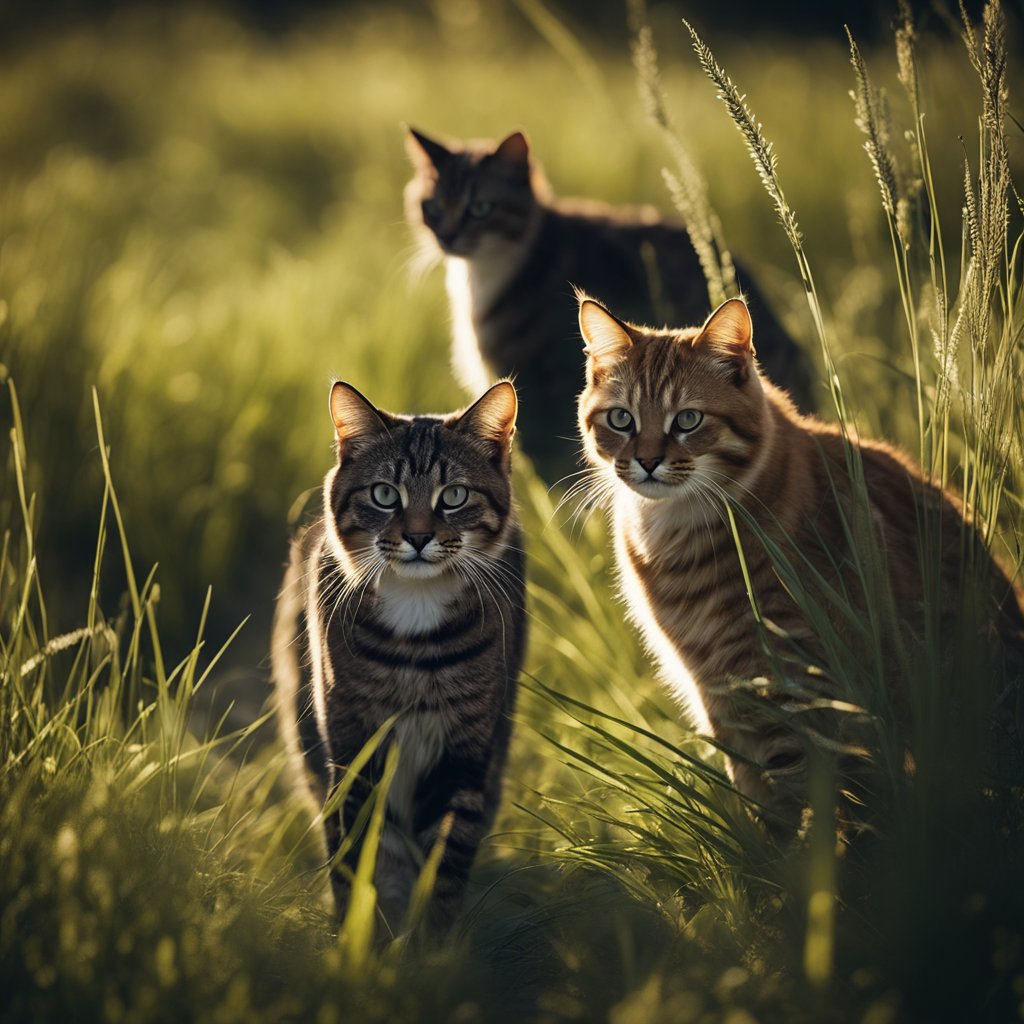
Cats Are Apex Predators: Understanding Their Role in the Ecosystem
Cats are one of the most common household pets and are often seen as cuddly and cute. However, they are also apex predators, which means they are at the top of the food chain. This designation is due to their hunting abilities, which are highly evolved and effective. Domestic cats are not the only felines that are apex predators. Big cats such as lions, tigers, and leopards also hold this title.
The Role of Cats in the Ecosystem
Cats play an important role in the ecosystem, as they help to control the population of small animals such as rodents and birds. Without cats, these animals would reproduce at an alarming rate, which would lead to a shortage of food and other resources. This would ultimately lead to a decline in the overall health of the ecosystem.
Defining Apex Predators
Apex predators are at the top of the food chain and have no natural predators. They are typically large and powerful animals that are skilled hunters. Cats are apex predators because of their hunting abilities, which are highly evolved and effective. They are able to catch prey with speed and agility, and their sharp teeth and claws make them formidable hunters.
Key Takeaways
- Cats are apex predators due to their highly evolved hunting abilities.
- Cats play an important role in the ecosystem by controlling the population of small animals.
- Apex predators are at the top of the food chain and have no natural predators.
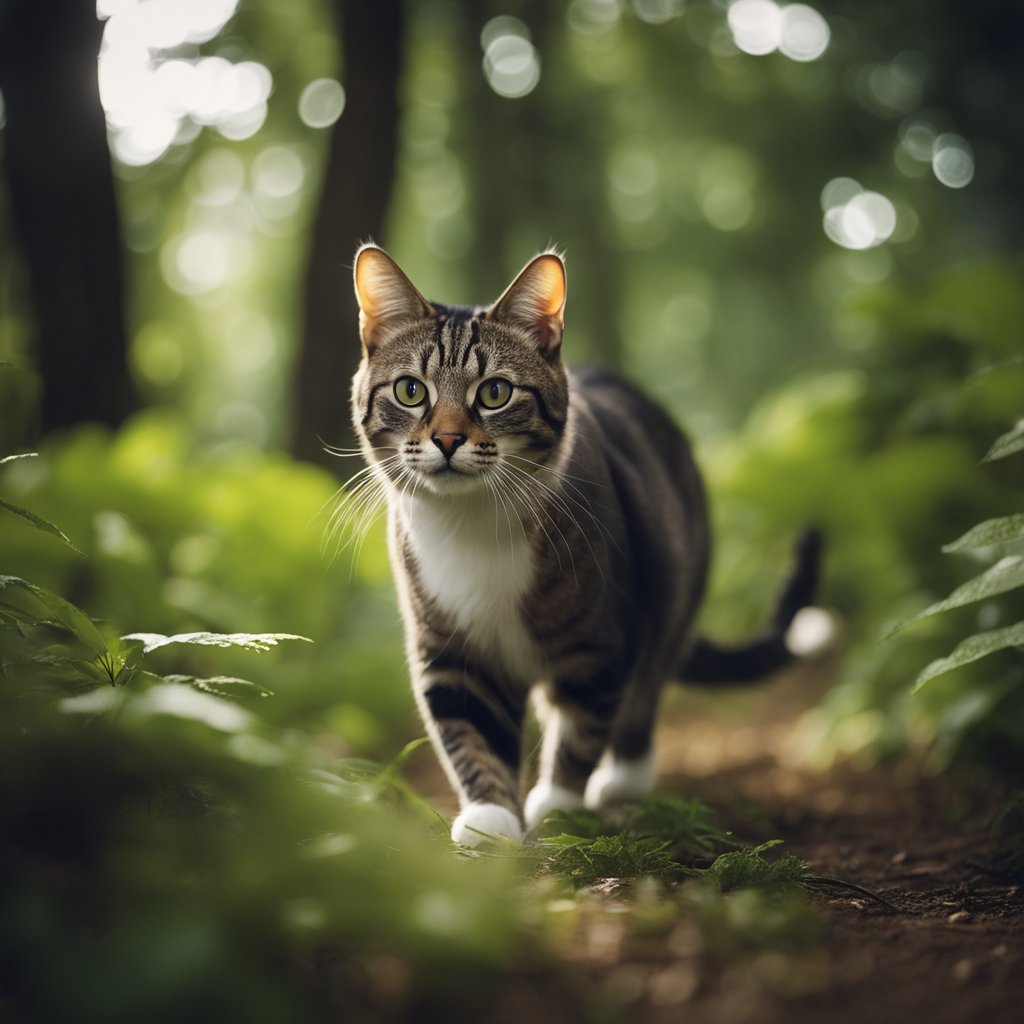
Cats as Natural Predators
Cats are natural predators that hunt small mammals, birds, and reptiles. They have evolved to be efficient hunters, with sharp claws and teeth that allow them to catch and kill their prey quickly. The hunting behavior of cats is an important part of the ecosystem, as it helps to control the populations of their prey.
Impact on Prey Populations
Cats have a significant impact on the populations of their prey. They are known to hunt small mammals, such as rodents and rabbits, as well as birds and reptiles. The hunting behavior of cats can help to control the populations of these animals, which can have a positive impact on the ecosystem.
However, cats can also have a negative impact on the populations of certain species, particularly birds. Domestic cats are estimated to kill billions of birds each year, which can have a significant impact on bird populations. This is particularly true for species that are already threatened or endangered.
Cats and Biodiversity
Cats are an important part of the biodiversity of the ecosystem. They are natural predators that help to control the populations of their prey, which can have a positive impact on the ecosystem. However, they can also have a negative impact on certain species, particularly birds.
It is important to balance the role of cats in the ecosystem with the need to protect threatened and endangered species. This can be achieved through responsible pet ownership, such as keeping cats indoors or using collars with bells to reduce their hunting ability.
Overall, cats are important natural predators that play a significant role in the ecosystem. While they can have both positive and negative impacts on the ecosystem, it is important to manage their populations to maintain a healthy and balanced ecosystem.
Defining Apex Predators
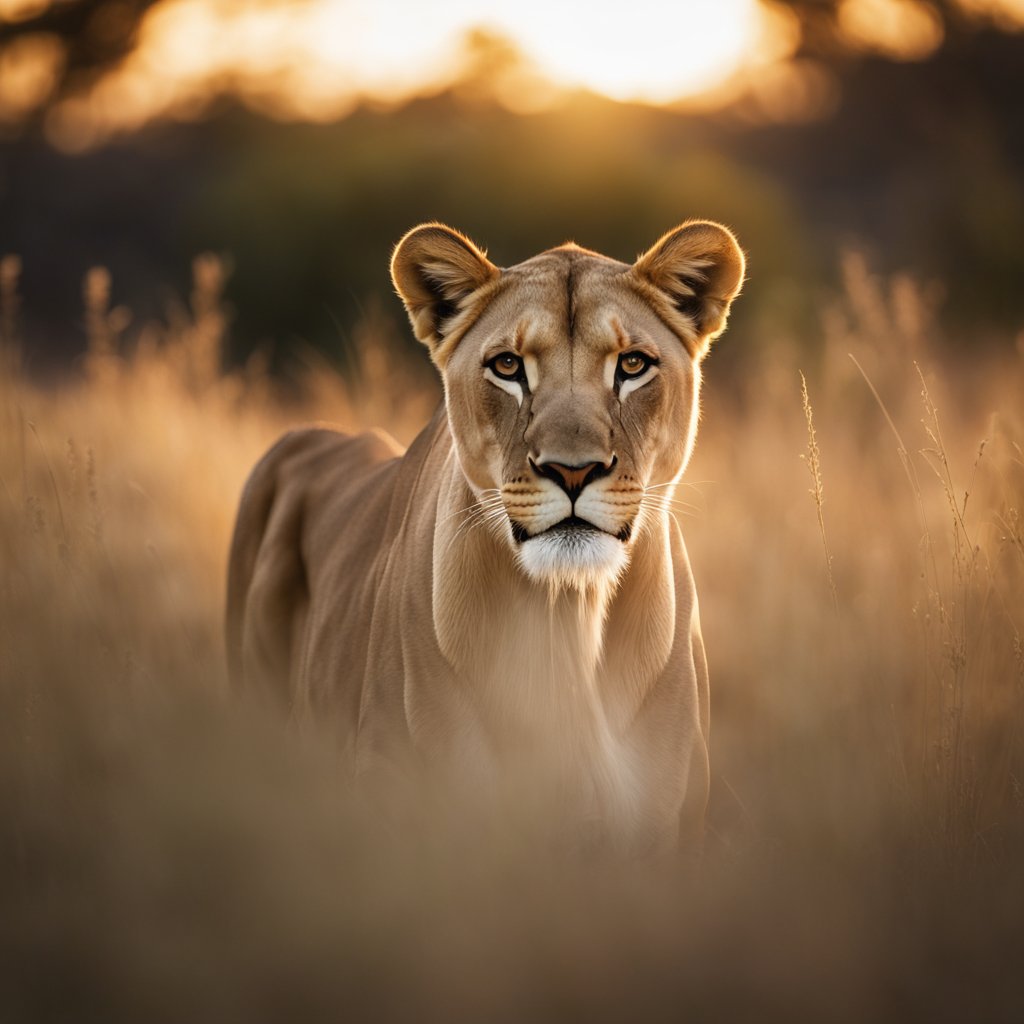
Apex predators are the top predators in a food chain that have no natural predators of their own. They are the hunters who sit at the top of the food chain, and they play a crucial role in maintaining the balance of ecosystems. Apex predators are characterized by their size, strength, and hunting abilities, which allow them to prey on a wide range of animals, including other predators.
Characteristics of Apex Predators
Apex predators have several characteristics that distinguish them from other predators. These include their large size, strength, and hunting abilities. They are also at the top of the food chain, which means they have no natural predators of their own. Apex predators are usually carnivorous and feed on a wide range of prey, including other predators.
Cats’ Status as Apex Predators
Cats are considered apex predators due to their hunting abilities, size, and strength. Domestic cats, as well as wild cats such as lions, tigers, and leopards, are all apex predators. Cats are known for their stealth, agility, and speed, which allow them to catch prey quickly and efficiently. They are also opportunistic hunters, which means they will eat whatever prey is available to them.
In conclusion, apex predators are an essential part of ecosystems, and cats are among the most successful and efficient apex predators in the animal kingdom. Their status as top predators is due to their size, strength, and hunting abilities, which allow them to hunt a wide range of prey, including other predators.
Cats’ Hunting Behaviors
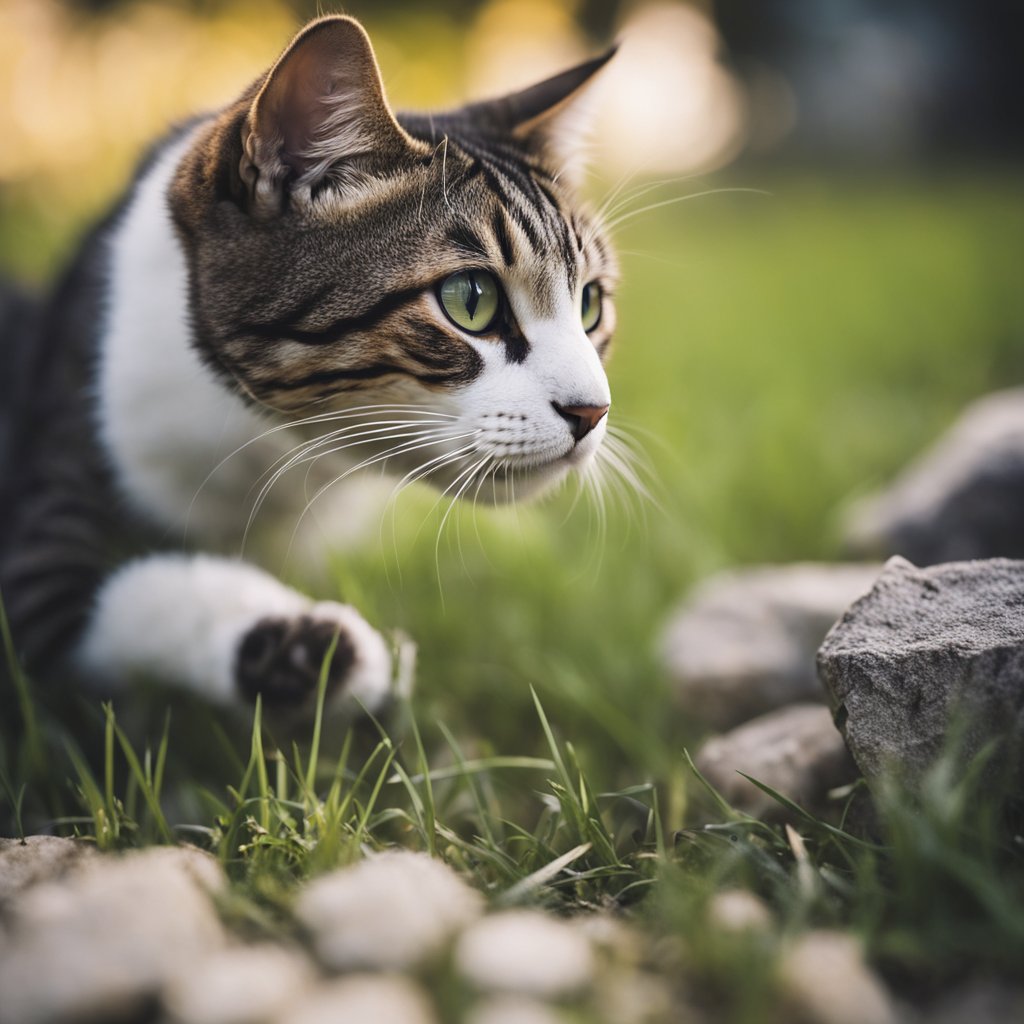
Techniques and Adaptations
Cats are known for their hunting prowess and have developed several techniques and adaptations to help them catch prey. One of their most notable adaptations is their retractable claws, which allow them to maintain their sharpness and stealth while moving through various terrains. Their keen senses, including their excellent eyesight, hearing, and sense of smell, also help them locate prey.
Cats use several hunting techniques, including stalking, pouncing, and ambushing. They are also known for their bursts of speed, which they use to chase down prey. These techniques and adaptations have helped cats become successful hunters and apex predators.
Stealth and Speed
Cats’ stealth and speed are crucial to their hunting success. They move quietly and carefully, using their keen senses to detect prey and avoid detection. Their fur also helps them blend into their surroundings, making them less visible to potential prey.
When it comes to speed, cats are capable of impressive bursts of acceleration, allowing them to catch prey that may be faster than them. This ability is due to their powerful leg muscles and flexible spines, which allow them to change direction quickly and make sudden movements.
Cats as Carnivorous Hunters
Cats are obligate carnivores, meaning they require a diet of meat to survive. Their hunting behaviors are essential for obtaining the nutrients they need to thrive. They are known for their preference for small prey, such as rodents, birds, and insects, but are also capable of taking down larger prey, such as rabbits and even deer in some cases.
Overall, cats’ hunting behaviors are a critical aspect of their biology and evolution as apex predators. Their techniques and adaptations have allowed them to become successful hunters, and their carnivorous diet is essential for their survival.
Big Cats Versus Domestic Cats
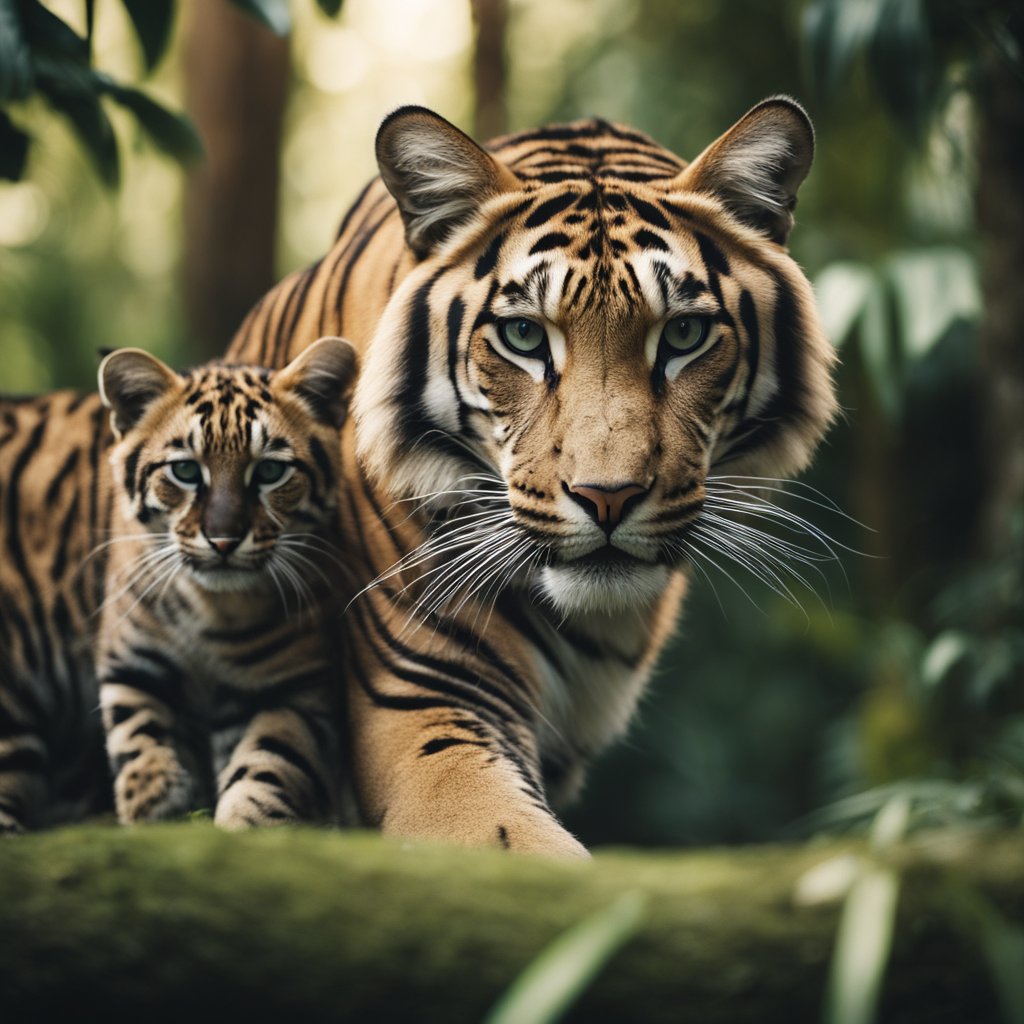
Comparative Analysis of Hunting Skills
Big cats, such as lions, tigers, jaguars, leopards, and cheetahs, are apex predators, while domestic cats are not. Domestic cats are skilled hunters, but they do not have the same level of hunting skills as big cats. Big cats have evolved to be highly specialized hunters with superior strength, speed, and agility. They are capable of taking down large prey, such as wildebeests, zebras, and buffaloes.
In contrast, domestic cats are more suited for hunting small prey, such as mice, rats, and birds. They have sharp claws and teeth, but they lack the strength and speed of big cats. Domestic cats also rely on their stealth and patience to catch their prey, whereas big cats use their speed and power to overpower their prey.
Differences in Prey and Habitats
Big cats and domestic cats also have different prey and habitats. Big cats live in diverse ecosystems, such as savannas, forests, and mountains, where they hunt a variety of prey. Lions, for example, live in grasslands and hunt large herbivores, such as wildebeests and zebras. Tigers live in forests and hunt deer and wild pigs. Jaguars live in rainforests and hunt monkeys, rodents, and reptiles.
Domestic cats, on the other hand, are adapted to living in human environments and hunting small prey. They are commonly found in urban and suburban areas, where they hunt rodents, birds, and insects. Domestic cats are also kept as pets and do not have to hunt for their survival.
Adaptations to Diverse Ecosystems
Big cats have evolved to adapt to diverse ecosystems and prey. For example, snow leopards are adapted to living in high-altitude mountain ranges and hunting mountain goats and sheep. Lynx are adapted to living in cold climates and hunting small mammals, such as rabbits and hares. Cheetahs are adapted to living in open grasslands and hunting antelopes and gazelles.
Domestic cats, on the other hand, have adapted to living in human environments and have become more social and less solitary. They have also developed a range of vocalizations and body language to communicate with humans.
In conclusion, big cats and domestic cats have different hunting skills, prey, and habitats. Big cats are apex predators that are adapted to living in diverse ecosystems and hunting a variety of prey. Domestic cats are skilled hunters that are adapted to living in human environments and hunting small prey.
Conservation and Threats
Human Impact on Apex Predators
Cats are apex predators and play a crucial role in maintaining the balance of the ecosystem. However, human activities have posed a significant threat to the survival of these big cats. Habitat destruction, poaching, and human-wildlife conflict are some of the primary factors that have led to a decline in their population. The loss of habitat due to deforestation and urbanization has resulted in the fragmentation of their natural habitat, leading to a decrease in their prey base. Poaching for their fur, bones, and other body parts has also been a significant contributor to their decline.
Conservation Efforts for Big Cats
Conservation efforts have been put in place to protect these apex predators. These efforts include the establishment of protected areas and national parks, where they can live and hunt without human interference. Additionally, conservation groups have been working towards creating awareness about the importance of these predators in the ecosystem and the need to protect them. These efforts have been successful in increasing the population of some big cat species, such as the tiger and the lion.
The Threat of Extinction
Despite the conservation efforts, the threat of extinction still looms over some big cat species. The IUCN Red List has listed several big cat species as endangered or critically endangered. The loss of habitat, poaching, and human-wildlife conflict continue to pose a significant threat to their survival. It is imperative that conservation efforts are continued and strengthened to ensure the survival of these apex predators and maintain the biodiversity of the ecosystem.
In conclusion, cats are apex predators that play a crucial role in maintaining the balance of the ecosystem. However, human activities have posed a significant threat to their survival. Conservation efforts have been put in place to protect these predators, but the threat of extinction still looms over some species. It is essential to continue and strengthen conservation efforts to ensure their survival and maintain the biodiversity of the ecosystem.
Frequently Asked Questions
What characteristics make domestic cats effective hunters?
Domestic cats are highly skilled hunters with a number of physical and behavioral adaptations that make them effective predators. They have sharp claws and teeth, excellent eyesight, and acute hearing, which allows them to detect and capture prey with ease. They are also agile and quick, able to move with great speed and stealth when stalking prey. Additionally, cats have a strong instinct to hunt, and will often spend hours stalking and playing with their prey before finally making a kill.
How do the hunting success rates of house cats compare to other predators?
While domestic cats are not as efficient hunters as their larger wild counterparts, they are still highly successful predators. Studies have shown that domestic cats have a hunting success rate of around 30%, which is comparable to that of many wild predators. However, unlike wild predators, domestic cats often kill more prey than they need, and will sometimes play with and torture their prey before killing it.
In what ways are big cats considered top predators in their environments?
Big cats, such as lions, tigers, and leopards, are considered top predators in their environments due to their size, strength, and hunting abilities. These animals are able to take down large prey, such as buffalo and deer, and are often at the top of the food chain in their ecosystems. They are also highly skilled hunters, able to use their strength, speed, and stealth to catch their prey.
What is the impact of feral cats on local wildlife as apex predators?
Feral cats can have a significant impact on local wildlife as apex predators. These cats are highly skilled hunters, and are able to take down a wide range of prey, including birds, rodents, and small mammals. They are also able to outcompete many native predators, such as foxes and weasels, for food and resources. As a result, feral cats can have a negative impact on local ecosystems, and can contribute to the decline of native wildlife populations.
How do the predatory instincts of cats and dogs differ?
Cats and dogs have different predatory instincts, which are shaped by their evolutionary history and their domestication. Cats are solitary hunters, and are able to use their stealth and agility to catch small prey. Dogs, on the other hand, are pack hunters, and are able to take down larger prey through cooperation and teamwork. Additionally, dogs are often trained to hunt specific animals, such as birds or rabbits, while cats have a more generalist approach to hunting.
Why might some consider domestic cats among the deadliest of predators?
While domestic cats are not typically considered among the deadliest of predators, they can have a significant impact on local wildlife populations. This is particularly true in areas where cats are allowed to roam freely and hunt without restriction. In these areas, cats can contribute to the decline of native wildlife populations, and can have a negative impact on local ecosystems. Additionally, cats can carry diseases that can be transmitted to other animals, further contributing to their impact on local wildlife.